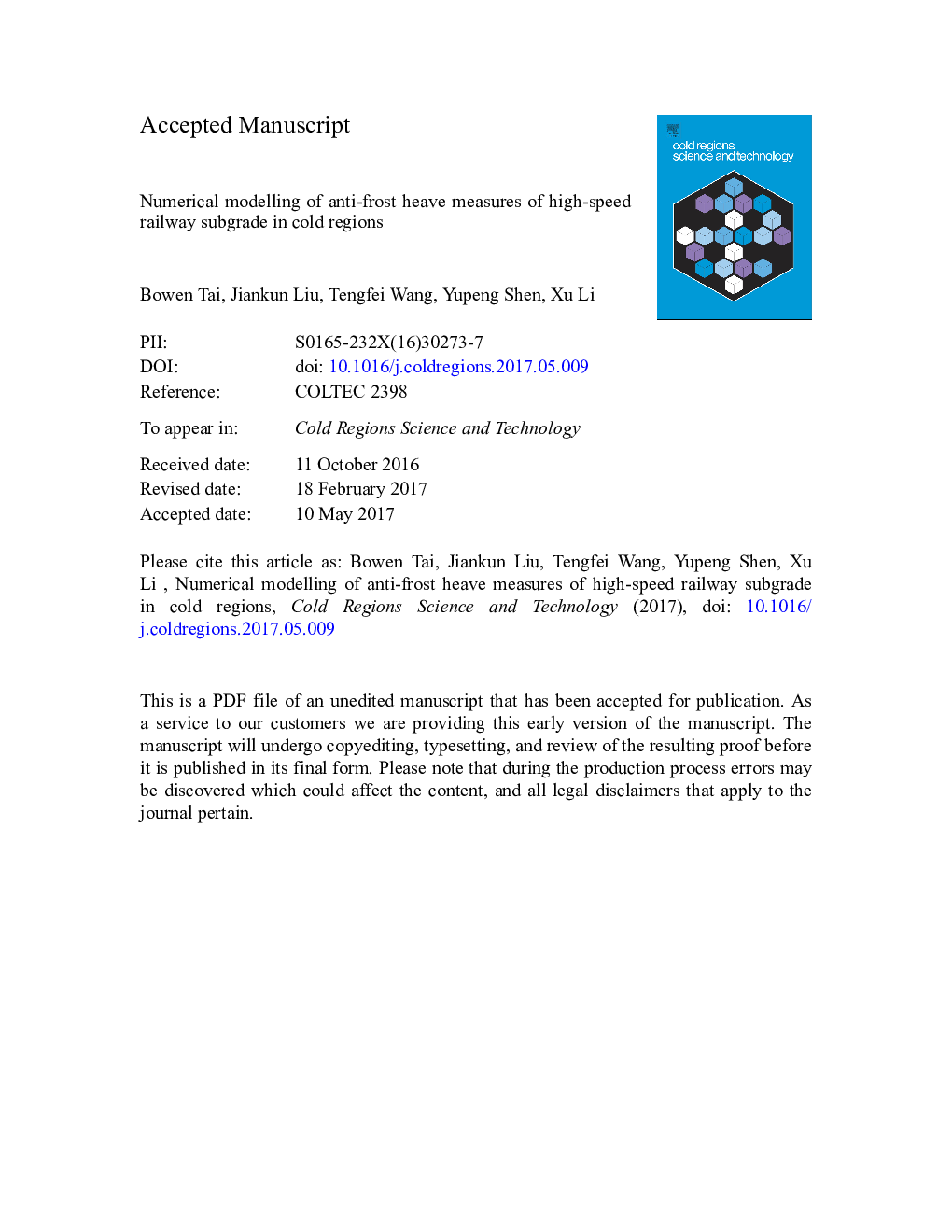| Article ID | Journal | Published Year | Pages | File Type |
|---|---|---|---|---|
| 5779355 | Cold Regions Science and Technology | 2017 | 25 Pages |
Abstract
The frost heave and thaw settlement of high-speed railway subgrade directly affect the running speed and safety operations of trains in cold regions. Based on the theory behind water flow and heat transfer in unsaturated soils, a moisture-thermal coupling differential equation in frozen soils is established, and a full coupling of the temperature and moisture fields of frozen soils is realized. To validate the numerical model for frost heave, the frost heave of subgrade, which is calculated by combining the ice content simulated by the moisture-thermal coupling model with the hydrodynamic frost heave model, is compared to field data. Finally, the frost heave of three different subgrades (subgrade with insulation, subgrade with insulation + asphalt, and subgrade with gravel + insulation + asphalt) was calculated at the time of the strongest frost heave. The results show that the subgrade with gravel + insulation + asphalt performs best at controlling frost heave, followed by the subgrade with insulation + asphalt and the subgrade with insulation. In conclusion, it is recommended that the subgrade with gravel + insulation + asphalt should be applied in high speed railway construction to reduce frost heave damage and maintenance expenses, and to ensure that trains can operate at maximum speed.
Keywords
Related Topics
Physical Sciences and Engineering
Earth and Planetary Sciences
Earth and Planetary Sciences (General)
Authors
Bowen Tai, Jiankun Liu, Tengfei Wang, Yupeng Shen, Xu Li,
